I can see how frustrating it can be when you work so hard to maintain something and it doesn’t turn out right! If your previously lush and leafy green indoor plant starts to turn yellow, you might worry it’s the end of the world. Relax; it’s not the end of the world!
It’s natural for indoor plant leaves to turn yellow and drop off. Plants do this to prepare space for new leaves. In contrast, yellowing leaves at once are definitely signs of distress. Thus, run your finger down the list of symptoms to find the solution for your plant. Look at the exact location where the difficulty is occurring and save your plant.
Why my indoor plant leaves are turning yellow?
It’s time to put on your Sherlock hat and do some investigation when you see indoor plant leaves turning yellow. There are many reasons why plant leaves turn yellow. These include environmental conditions, pests, diseases, and even the growth medium.
With the solution, let’s examine them in-depth
Moisture stress
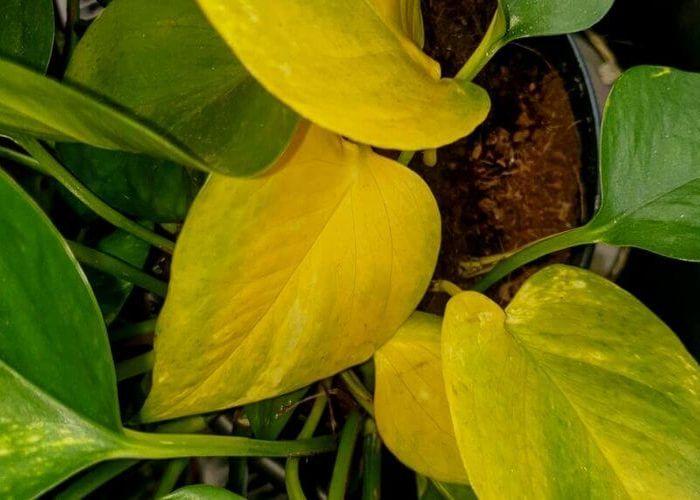
The most common cause of yellow leaves is either overwatering or underwatering. Hence, it is essential to water potted plants as much as they need.
When you see yellow leaves on a plant, check the soil in the pot. Does it seem dry? Has it soaked up water?
Because to conserve water, plants drop their leaves when they receive insufficient water. This prevents transpiration (a plant’s method of sweating). However, before they drop, their leaves will turn yellow. Whenever this occurs, water the soil frequently.
Even too much water can damage leaves. The soil can literally drown in an overdose of water when it doesn’t drain well. Hence, without oxygen, roots begin to die.
The diagnosis:
Your plant is likely thirsty if you see an inch of parched soil below the surface. Give that plant a glass of water ASAP, and make a commitment to water it more frequently.
Your plant may be getting enough water if the soil feels damp an inch below the surface, or it may be overwatered.
Also, seek out signs of root rot, such as a mildewed smell. To prevent your plants’ roots from sitting in water, don’t overwater them and move them to pots with better drainage.
Light

Another common reason why indoor plant leaves are turning yellow is that they aren’t getting enough light. Due to the low light level, photosynthesis is limited. However, as the light level increases, so does photosynthesis.
When plants do not receive enough light, the lower leaves of the plants start to yellow before they drop. If this is the case, you can search for a clue.
Typically, a plant that is yellowing from lack of light will show it on the side that is away from the source. For instance, the leaves near the window block all the light from the opposite side.
The diagnosis:
Move your plant from a shady corner to a sunny spot, or let it soak up the sun near a window for a few hours. After a move, watch the plant to see how it adapts. Some plants can have difficulty adjusting after a move.
“If your houseplant is near a blackout curtain that you often forget to open, don’t forget that as your plant can get sunlight no matter where you are.” says the Plant Distro , a budding land-based nursery in Queensland.
Temperature

It is also the temperature that affects the color of the leaves when it is too hot or too cold. During cold weather, tropical plants can have yellow leaves due to cold drafts.
Brown leaves can result from prolonged exposure to cold temperatures. For example, when kept near an air conditioner without periodic temperature changes.
The diagnosis:
In case of temperature problems, move your plants away from air conditioners. Additionally, open windows or doors that lead to the outside.
Plant Nutrition
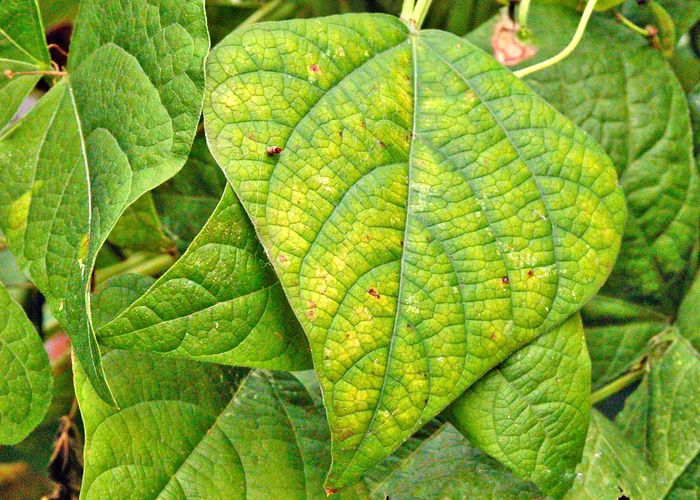
Often, your plants’ yellowing is also an indication that they need more nutrients. If you see unusual yellowing patterns, such as green veins but yellow tissue, then it is usually due to nutrient deficiencies.
Under or overfertilizing is a common cause of nutrient deficiencies. Hence, it’s important to apply fertilizer at the recommended rate.
In many cases, people use too much fertilizer on their plants to make them grow faster. However, it creates a toxic environment, which causes the leaves to turn yellow.
The diagnosis:
If your plant has yellow leaves and light green leaves on the new growth, it may be deficient in nitrogen. Consider using plant food that contains nutrients. And feed them at the recommended rate to avoid fertilizer burn. It doesn’t take long for your plant to look lush again when it has the right amount of fuel.
Viral Infection
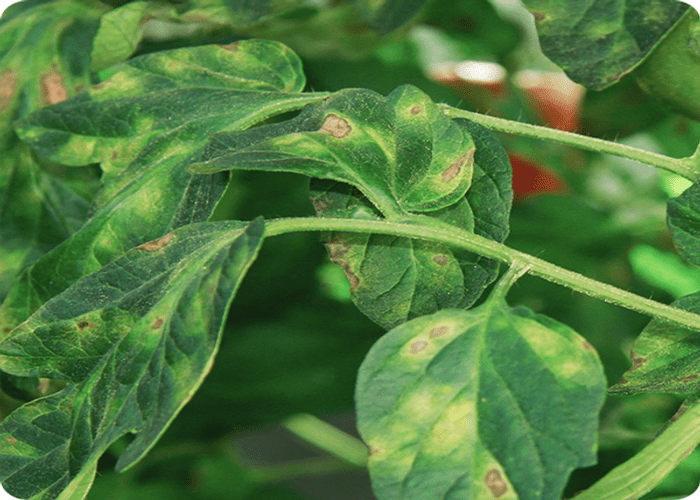
The symptoms of a viral infection can appear as blotchy yellow patches on your plant’s leaves. There may also be browning and discoloration of the flowers, as well as deformed leaves and stems.
The diagnosis:
A viral infection in plants may not be curable and can affect all nearby plants that are susceptible. As soon as you notice a sick plant, quarantine it from the rest of your plants. Be sure to check nearby plants to prevent the spread of the disease. It is possible to save the plant, but first, you should identify the virus.
Some plants require fungicides, while others can be propagated by removing healthy components. It may be painful if it’s your favorite plant, but if you can’t bring it back to health, you may have to discard it. Also, before using a pruning tool or pot on another plant, wash and sterilize it.
Normal aging
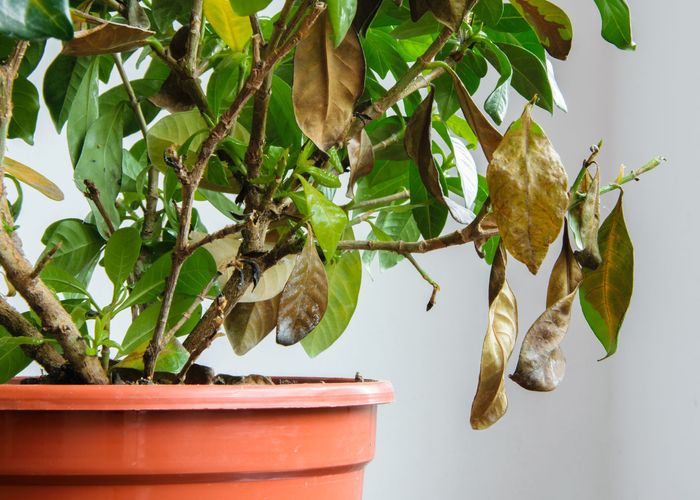
As plants age, their lower leaves become yellow and drop off. This is a natural part of their growth process.
The diagnosis:
In this case, there is no need to worry. If you notice your plant has become too leggy, try trimming back the main stem. This will promote new growth and make your plant bushier.
Cold draft
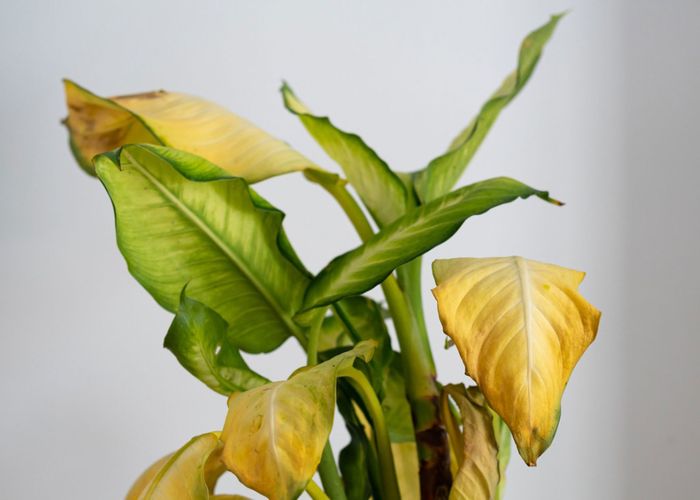
The leaves of tropical plants often turn yellow and drop when exposed to cold drafts. Unlike short-term exposure to cold, the process does not cause outright browning, pale, or transparent spots between the veins.
Move your plant to a less turbulent area if it is near an air-conditioning vent or a drafty window in the summer or winter. You need to keep an eye out for any further spread of yellow leaves. In order to increase humidity, it is also a good idea to mist tropical plants that are overwintering.
The diagnosis:
If your plant appears to be getting sick, remember that drafts are not just possible during the winter, but an overactive air conditioner may also be to blame. Also, keep in mind that a colder environment may need less frequent watering since the soil will not evaporate as quickly. Moreover, cold drafts may cause your plant to become water-logged and chilly.
Repotting
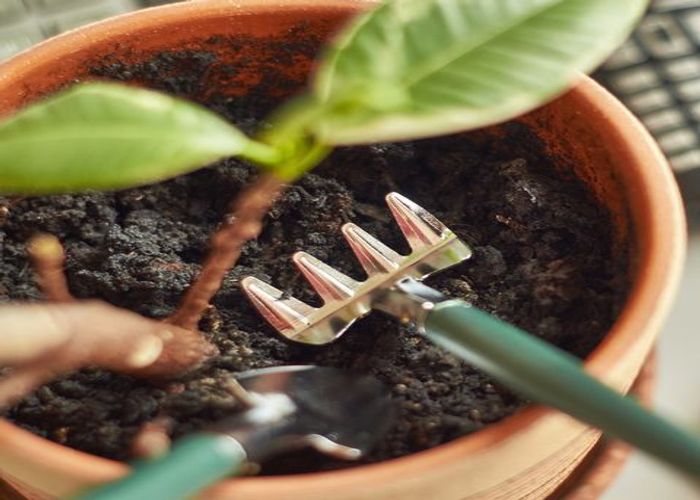
Yellow leaves may mean it’s time to re-pot. You need to give the roots plenty of room to absorb nutrients and water.
Gaumond notes, however, that the plant’s leaves may yellow for a week or so after it adapts to its new pot. During this time, avoid fertilizing so that the plant can recover naturally.
The diagnosis:
Repot when necessary, and give your plant some time to adjust to its new home.
Pests
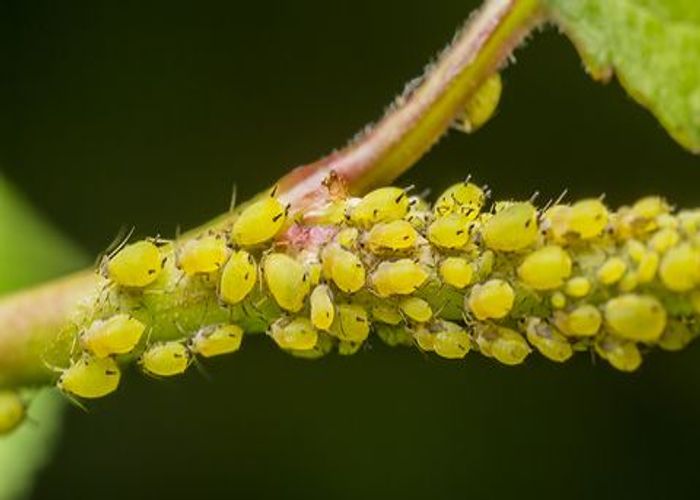
It is common for outdoor gardens to have harmful and beneficial pests. However, in most indoor plants, only harmful pests exist. If you notice yellowing patches on the leaves, it could indicate pest damage.
A horticulturist and botanical data specialist for Candide Gardening, Rosie Leary, identifies three common houseplant pests, “mealybugs, thrips, and scale, all of which pierce leaves and suck plant sap.” She says this causes discoloration, leaf loss, and sometimes death. Her treatment for them is soap, water, and an occasional rinse with neem oil.
The diagnosis:
If pests are present, you are likely to notice other signs of an invasion on closer inspection. Do the leaves have tiny holes? This could state that spider mites are eating them. Is the plant covered in white wax? The culprit might be mealybugs.
If your plant becomes infested, try rinsing it off, pruning the affected, wilting leaves, or spraying it with store-bought insecticide or neem oil.
Yellowing of Lower Leaves
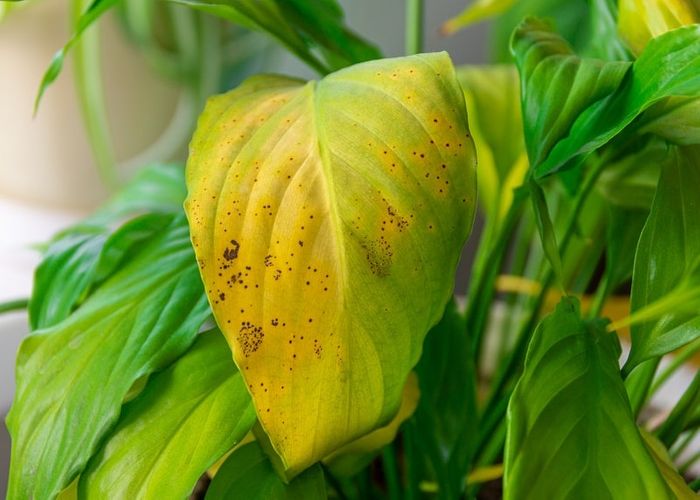
There are three possible reasons for indoor plant leaves turning yellow. In the first place, if roots are pushing through the bottom of the container, the plant needs a larger and fresh pot.
Besides, there may be insufficient nitrogen in the soil, which is important for plant growth. It is usually the lower leaves that are yellow first when a plant does not have enough of this element.
As your plants grow, they use up all the nitrogen in their potting soil, so repotting with fresh soil can help. Or, you can add nitrogen-rich fertilizer to the mix. Third, move your plant to a brighter spot to see if more light will help green up its leaves.
Yellow Leaves on Tips of Stems
When you notice a growth on the tips of stems or branches, it may indicate low iron levels. Yes, plants need this nutrient, but only in tiny amounts as we do. Iron-containing houseplant fertilizers help clear up the problem. Check the label to ensure the fertilizer contains iron before applying.
Yellow Leaves Near the Main Stalk
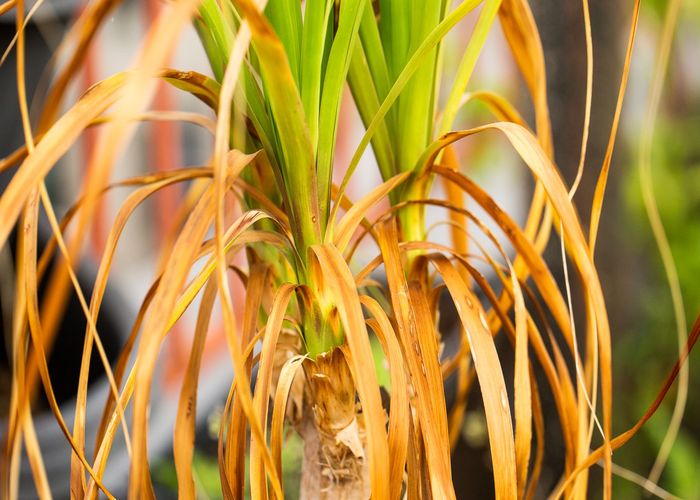
Your plant may be dealing with low magnesium or zinc if you notice that the leaves closest to the central stem are turning yellow on a branching houseplant. Use a houseplant fertilizer that contains these nutrients.
A lack of nitrogen could also be the cause of this issue. If you look at the label on the fertilizer of your choice, you will see three numbers separated by hyphens, such as 4-2-2. It shows the ratio of nitrogen, phosphorus, and potassium, these three nutrients plants need most. Also, the first number of nitrogen fertilizers should be higher or equal to the other two.
All the Leaves Turn Yellow

When your plant starts to turn yellow, it could be because the soil is waterlogged and the roots can’t get enough oxygen. You don’t need to water again until you feel the soil is dry to the touch.
If the plant isn’t too big for you to handle, you can remove it from the pot and inspect the roots for rot. If they all look black and soft, the plant has likely died. However, if you still see some firm, white roots, the plant might bounce back once it’s dried out a bit.
If your indoor plant has yellow leaves, it might also have pests such as spider mites or bacterial infections. Spray all your leaves with water if bugs are bothering your plant. Then treat the plant with neem oil or insecticidal soap. Continue spraying the plant every week until the pests no longer bother it.
If you have a large plant that is hard to move in and out of the shower, wipe the leaves with water. After that use horticultural oil or insecticidal soap.
Succulent Indoor Plant Leaves Turning Yellow
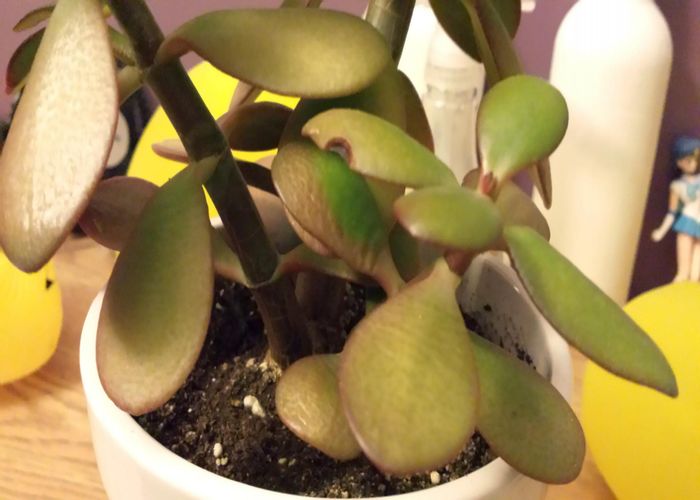
Succulent leaves are thick and fleshy because they store water. However, too much of a good thing can be harmful.
If these plants get too much water, the leaf cells will swell and rupture. Eventually, the leaves become yellow and develop corky, brown growths. It is a common problem in the winter, but it is also simple to fix: Stop watering. Let the soil dry, and then begin watering again. After planting your succulents, repot them in a succulent-and-cactus mix that drains quickly.
Plant Leaves Turn Yellow in Containers

In container plants, conditions must be carefully controlled because of the enclosed environment. Potted plants have limited space, storage for moisture and nutrients, as well as lighting and temperature requirements.
A lack of nutrients or too much fertilizer salt causes houseplants to turn yellow. For balance to be restored, it may be necessary to change the soil or leach it with large amounts of water. Moreover, changing soil can lead to a condition known as transplant shock, which also causes yellowing and leaf drops.
A simple change in location can cause yellowing leaves on indoor plants, which fall off the specimens. Moreover, stress can cause this, but low light or exposure to a draft can also play a role. A high pH can cause a condition called chlorosis.
When growing potted plants, it is a good idea to use a pH meter to ensure proper growth conditions. Other causes of yellow “water spots” are overhead watering, especially on plants with slightly furred leaves, such as gloxinia.
Conclusion
The yellowing of your indoor plant leaves can be caused by a variety of factors. In some cases, the problem is obvious, so it can be figured out and fixed immediately. Other times, it’s more mysterious. In these cases, you will need to make small changes one at a time until you see improvement.
Although you may correct the problem, you can still expect the yellow leaves to fall off with time. However, during the next growing season, new leaves may appear if the plant regains its health. Keep in mind that growing plants always takes patience. Try to eliminate these common causes of yellow leaves, then watch for the results.
Related Posts
- Bonsai for Beginners in India [Update 2024]
- 15 Best Plants for Front Door Entrance India | Auspicious plants for front door
- 10 Study Table Decoration Ideas That Will Make You Love Learning
- Revive Your Bonsai Tree with These Proven Techniques!
- Top 15 Benefits of Bonsai Plants that will Make your Life Awesome
- Top 10 Indoor Plants for Cafes to Enhance Decor & Comfort







